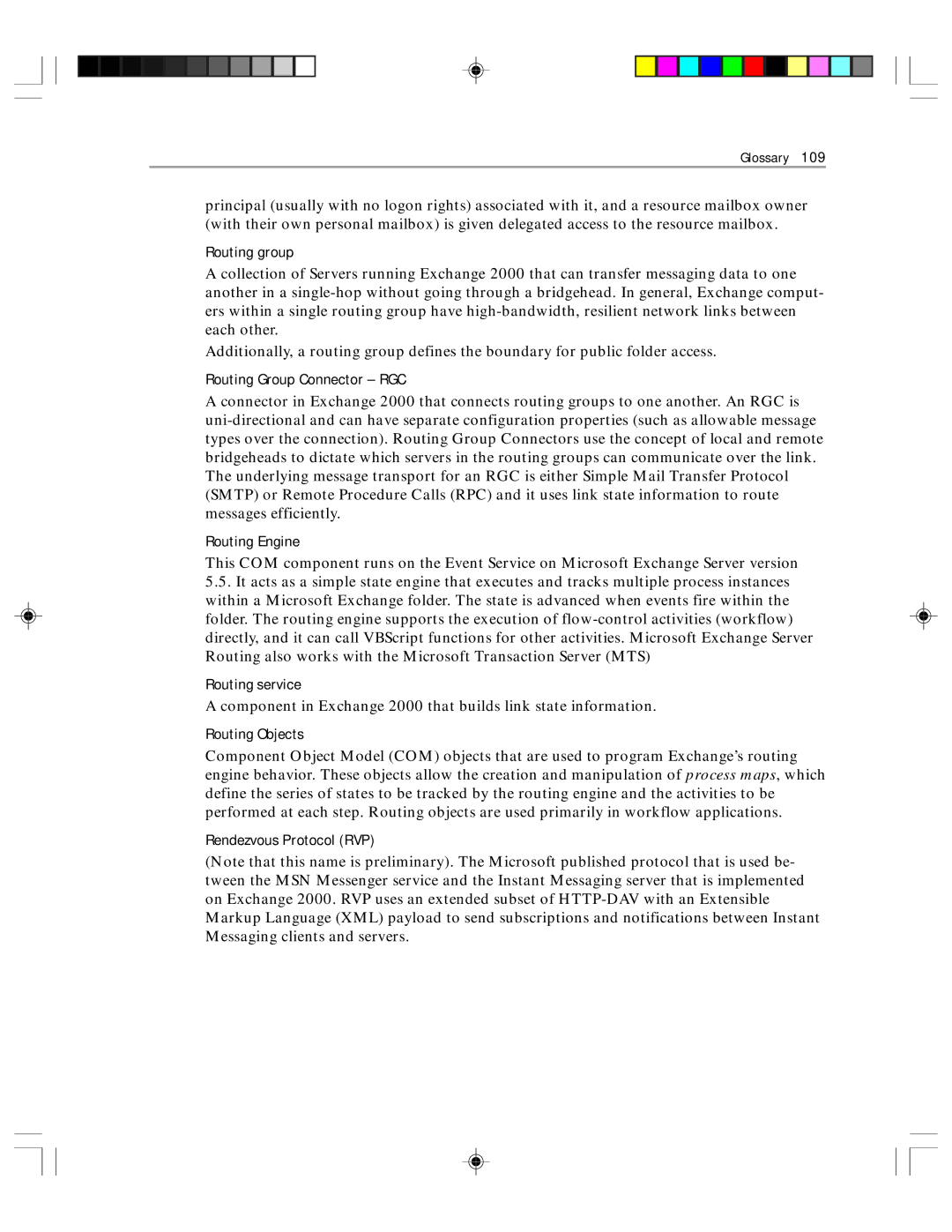
Glossary 109
principal (usually with no logon rights) associated with it, and a resource mailbox owner (with their own personal mailbox) is given delegated access to the resource mailbox.
Routing group
A collection of Servers running Exchange 2000 that can transfer messaging data to one another in a
Additionally, a routing group defines the boundary for public folder access.
Routing Group Connector – RGC
A connector in Exchange 2000 that connects routing groups to one another. An RGC is
Routing Engine
This COM component runs on the Event Service on Microsoft Exchange Server version
5.5.It acts as a simple state engine that executes and tracks multiple process instances within a Microsoft Exchange folder. The state is advanced when events fire within the folder. The routing engine supports the execution of
Routing service
A component in Exchange 2000 that builds link state information.
Routing Objects
Component Object Model (COM) objects that are used to program Exchange’s routing engine behavior. These objects allow the creation and manipulation of process maps, which define the series of states to be tracked by the routing engine and the activities to be performed at each step. Routing objects are used primarily in workflow applications.
Rendezvous Protocol (RVP)
(Note that this name is preliminary). The Microsoft published protocol that is used be- tween the MSN Messenger service and the Instant Messaging server that is implemented on Exchange 2000. RVP uses an extended subset of
